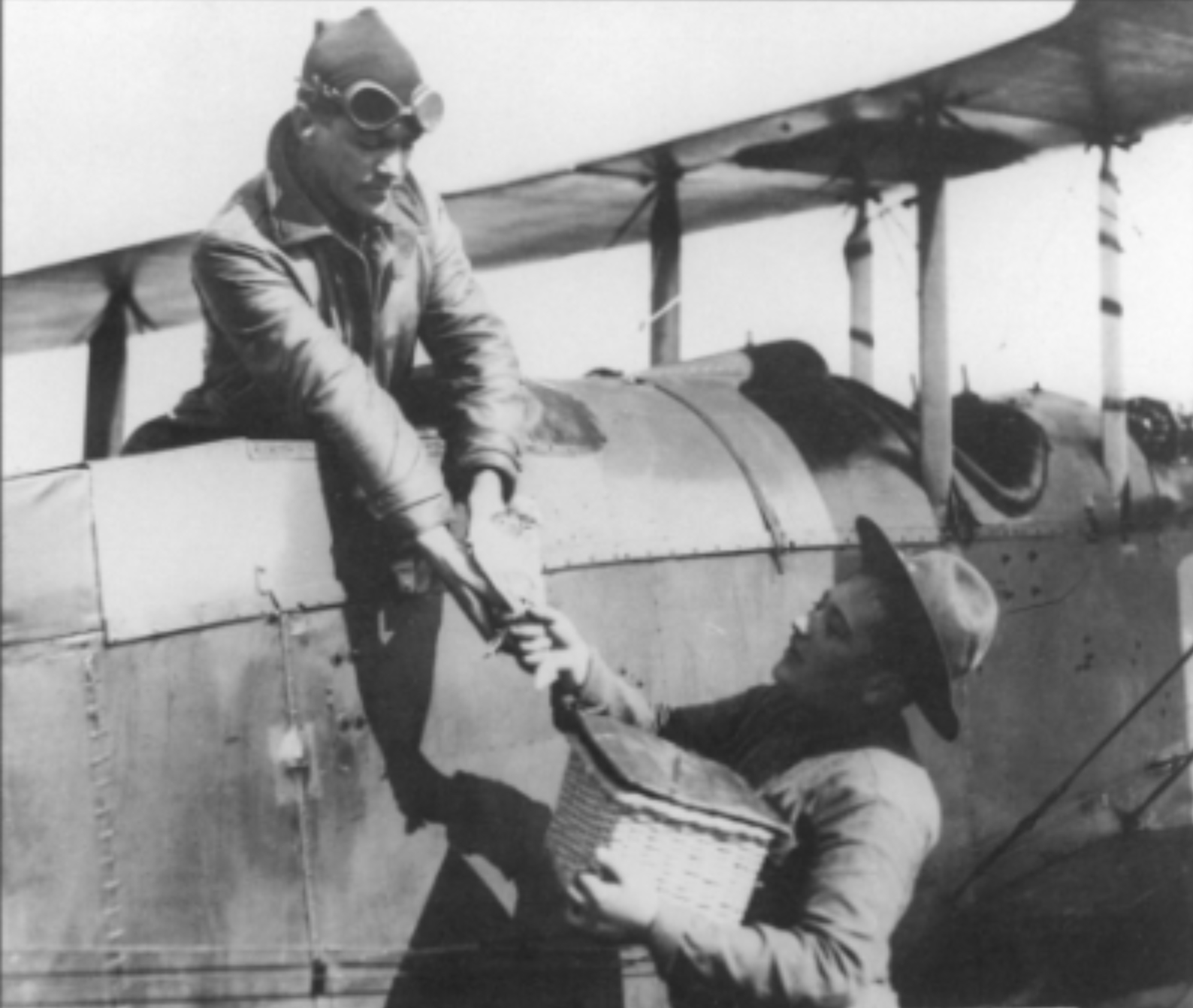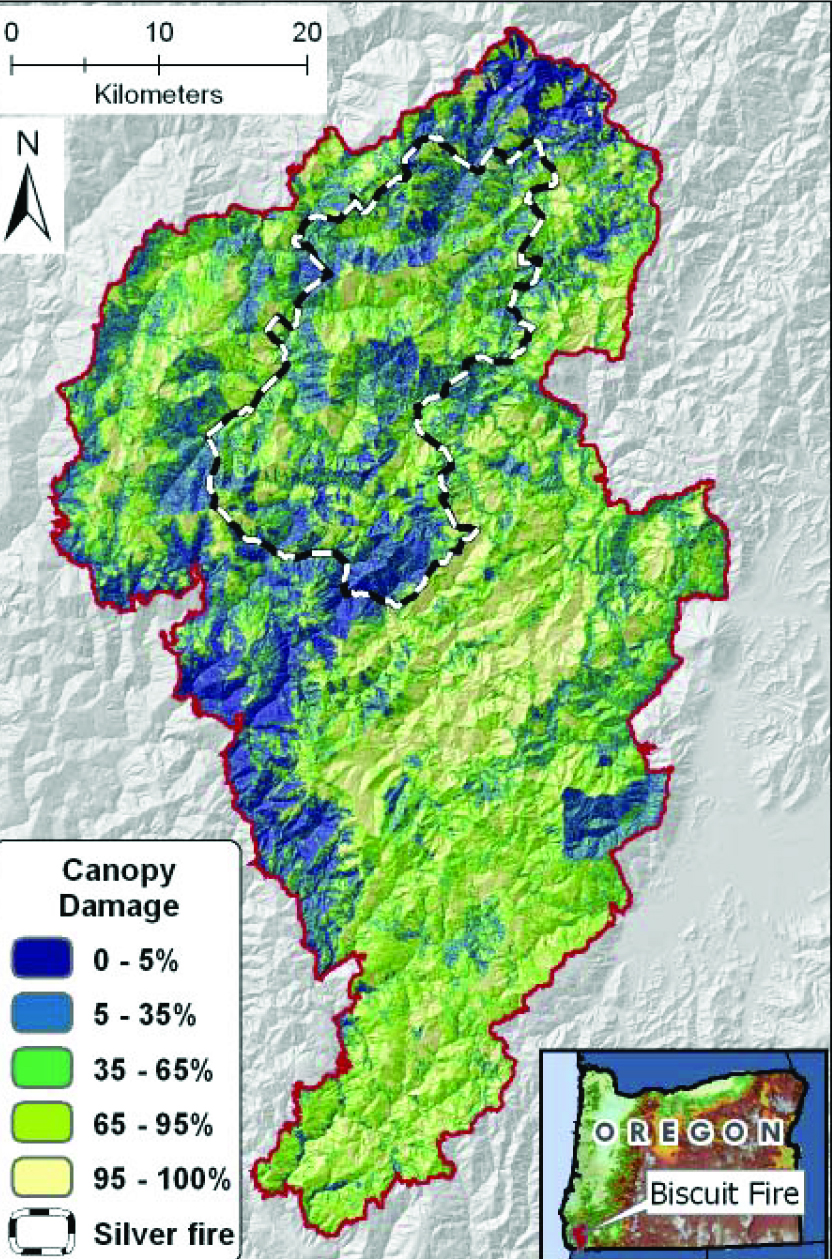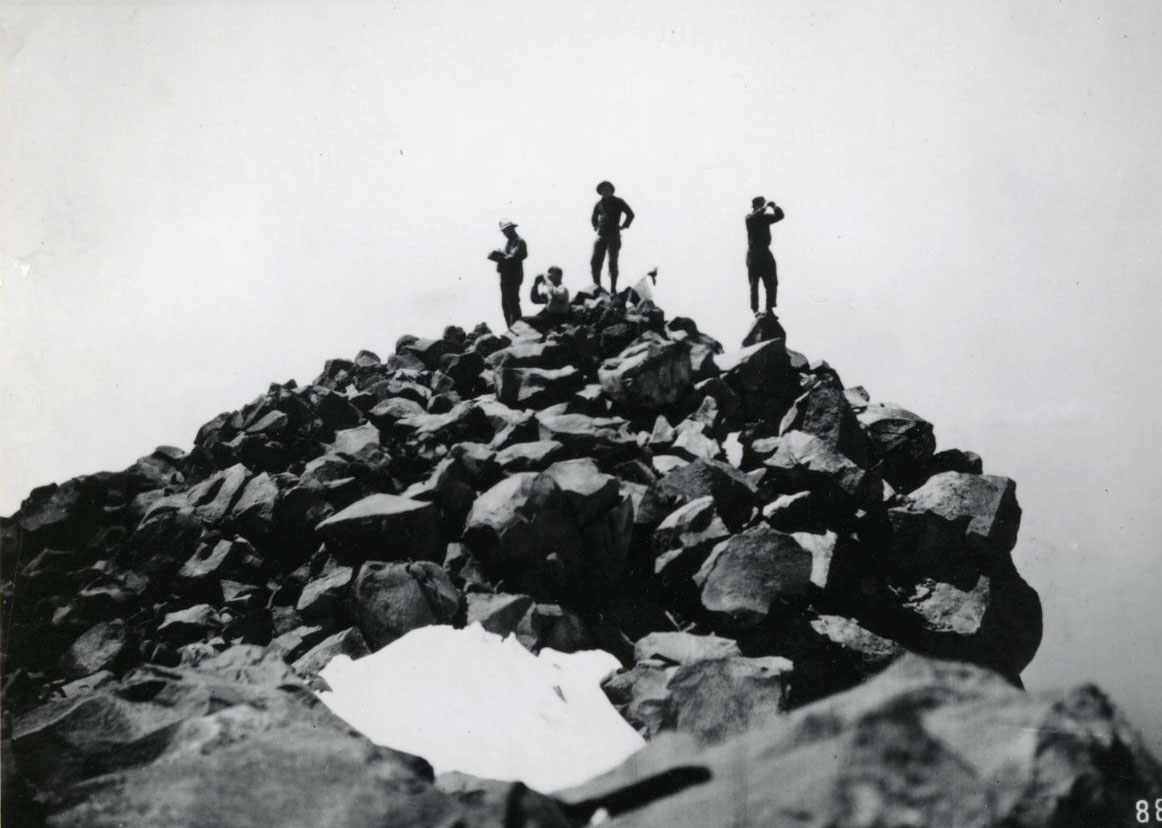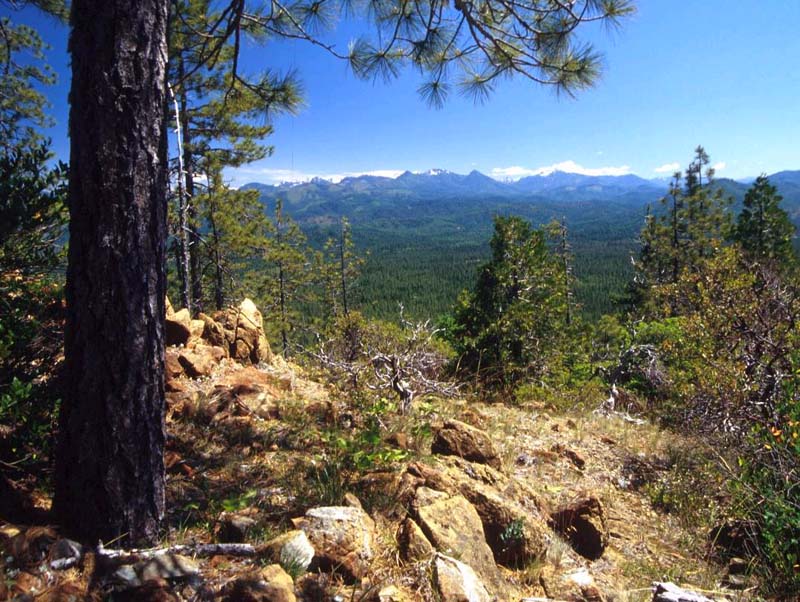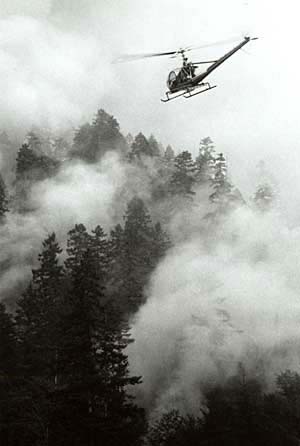Beginning in 1919, U.S. Army Air Service pilots, accompanied by U.S. Forest Service observers, patrolled the skies above the forests of western Oregon detecting and reporting fires. Hampered by accidents, reduced funding, and poor communication with firefighters on the ground, the pioneering program did not last. The early effort, however, set the stage for the later, widespread, and successful use of aircraft in combatting wildfires—from the deployment in remote areas of parachuting smokejumper crews by the late 1930s to the recent reliance both on large fixed-wing aircraft that drop fire-retardant slurry in advance of a flame front and on helicopters that release heavy bucket-drops of water onto stubborn hot spots.
By 1909, six years after the Wright Brothers’ first flight, a few Forest Service men had proposed the aerial detection of forest fires as a useful tool. But the agency did not become engaged in aerial detection until the late spring of 1919, when the Army-Forest Service aerial fire patrol program began in California. The program soon spread to Oregon, where the State Department of Forestry also participated. Influential army aviators hoped to use the program’s logistical needs to help retain adequate congressional funding for the Air Service, and among the officers leading the effort in California and Oregon were Colonel H. H. “Hap” Arnold and Colonel Carl Spaatz, both of whom would earn fame during World War II. For its part, the Forest Service was happy to cooperate, believing that, if nothing else, the publicity would benefit the agency.
The first aerial patrol in Oregon took flight on August 2, 1919, with seven aircraft—Curtiss JN-4D and JN-4H, also known as Jennies—that operated from fields in Salem and Roseburg. But fatal crashes, including one in Oregon, and other mishaps that year led Colonel Arnold to replace the Jennies with De Havilland DH-4 biplanes, which had powerful 400-horsepower Liberty engines. Although De Havilland was a British company, these De Havillands had been manufactured in the United States for service in the war.
The program also developed more landing fields. Before the end of the 1919 season, additional aerial fire-patrol bases in Oregon were located near Portland (with its planes also patrolling portions of western Washington), at Eugene, and on the south edge of Medford. In 1920, the Medford installation was christened Newell Barber Field for a local man who had been killed while flying an aerial reconnaissance mission over German trenches in northern France. It became a major base for Air Service patrols. On September 21, 1920, a De Havilland piloted by Cadet DeGorma, flying too low, struck trees near Newell Barber Field and “took a nose dive”; the pilot and his mechanic survived.
Communication between pilots and the ground about the location of a fire was difficult. Forest Service aerial observers who knew local geography wrote a detailed description of a fire’s location on paper that, weighted with a rock, was dropped from a low elevation over a mountaintop fire lookout. Provided the lookout man could find the message, he telephoned the information to the ranger station. Carrier pigeons, used briefly to carry messages about fires, proved unsuccessful, and by 1921 wireless radios had been installed on the planes.
Congress forced the peacetime army to cut spending. As a result, Forest Service lookouts accounted for more first reports of fires than aircraft did, and the effectiveness of aerial patrols was increasingly questioned. By 1922, regular daily flights had ended, and the number of aircraft and the frequency of patrols declined steadily over the next two years. Political intervention by Oregon Senator Charles McNary temporarily averted the army’s decision to terminate the program at the end of 1924, and it limped through 1925. The U.S. Army, the Forest Service, and the State of Oregon ended their cooperative endeavor that year, but the Forest Service continued to fly a few of its own planes (most likely surplus Air Service craft) over Oregon’s forests through 1927.
Although by no means a rousing success, the U.S. Army/Forest Service aerial patrol program contributed directly to the establishment of Oregon’s first airfields. Newell Barber Field was not replaced until 1929, and Eugene’s original airport remained in use until 1943. The effort also contributed to improvements in aerial radio communication as well as to the Forest Service’s subsequent reliance on aircraft for both fire detection and fire suppression.
-
![]()
Airmen loading carrier pigeons to communicate on fire patrols, 1919.
Courtesy USAF Photographic Collection, Smithsonian
-
![]()
De Havilland DH-4 in flight over Northern California, 1920.
Courtesy USAF Photographic Collection, Smithsonian
-
![]()
Lt. Col. Hap Arnold (left), Mather Field, 1930.
Courtesy USAF Photographic Collection, Smithsonian
-
![]()
Major Carl Spaatz, Mather Field.
Courtesy USAF Photographic Collection, Smithsonian
-
![]()
Col. Carl Spaatz.
Courtesy U.S. Air Force -
![]()
De Havilland DH-4 biplane.
Courtesy U.S. Air Force -
![]()
Curtiss JN-4D Jenny.
Courtesy Smithsonian
Related Entries
-
![Biscuit Fire of 2002]()
Biscuit Fire of 2002
On July 13, 2002, a series of electrical storms passed over southwester…
-
![Forest Fires of 1910]()
Forest Fires of 1910
During the late summer of 1910, a searing drought combined with high-ve…
-
![National Forests in Oregon, 1892 to 1933]()
National Forests in Oregon, 1892 to 1933
The first forest reserves in the state were established in 1892-1893, a…
-
![Oxbow Ridge Fire of 1966]()
Oxbow Ridge Fire of 1966
Oregon’s forests were extremely dry in August 1966. Hot east winds bega…
-
![Tillamook Burn]()
Tillamook Burn
The Tillamook Burn was a catastrophic series of large forest fires in t…
Related Historical Records
Map This on the Oregon History WayFinder
The Oregon History Wayfinder is an interactive map that identifies significant places, people, and events in Oregon history.
Further Reading
Boyce, Charles W. “Aerial Forest Fire Patrol in Oregon and California.” Journal of Forestry 19 (1921).
Cermak, Robert. “Pioneering Aerial Forest Fire Control: The Army Air Patrol in California, 1919-1921.” California History (Fall 1991): 290-305.
Johansen, Frederick A. “Attacking Fires from the Air.” Air Force Magazine (October 2010).
Oregon State Forester, Annual Reports, 1919-1925, Southern Oregon University archives.

